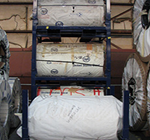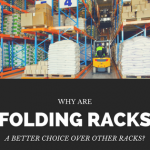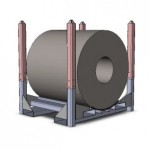Traditional vs. Open Side Containers: Making the Right Choice for Your Cargo
Selecting the appropriate container for cargo shipping plays a crucial role in influencing the security and overall success of the logistics process. There are two prominent container types in the industry: Open Side Containers and Traditional Containers. Understanding the nature of each container type is essential for cargo owners and logistics professionals to make informed decisions. Through a careful comparison of these two container options, we can identify the best-suited choice for your specific cargo requirements for safe and efficient transportation of your goods throughout the entire journey.

What are Open Side Containers?
Open sided shipping containers are a type of cargo container that feature full length openings on their sides. These openings have doors that can be fully opened providing access to the interior of the container. The standout feature of these containers is their ability to allow cargo to be loaded and unloaded from the sides in addition to the rear access points. This design offers accessibility to stored goods making it ideal for transporting items that may not easily fit through container doors.
What are Traditional Containers?
Traditional Containers, also known as Standard or Dry Containers are the used type of cargo containers, in global shipping and logistics. Traditional containers are usually made of steel. Come in a box shape, with standard sizes. The typical lengths of these containers are 20 feet and 40 feet with heights either 8 feet 6 inches or 9 feet 6 inches. They are built to endure conditions making them suitable for transporting cargo over long distances and across different modes of transportation.
Types of Cargo and Compatibility
Cargo Suitable for Side Opening Shipping Container
Open side containers are great for carrying types of cargo that need easy access from the sides and careful handling. Some examples of cargo that work well with these containers include:
Cargo: Perfect for moving items like machinery, industrial equipment or pre built structures.
Construction Materials: Ideal for loading long steel beams, pipes or lumber that require special care during transportation.
Machinery: Convenient for transporting vehicles, heavy machinery or equipment, with standard sizes. The side access makes it easy to load and secure these assets.
Perishable Goods: Some perishable goods may require specific handling and ventilation. These containers can facilitate the loading of temperature-sensitive cargo from the sides, ensuring that the necessary temperature control measures are easily implemented.
Cargo Best Suited for Traditional Containers
Traditional Containers are highly versatile and can accommodate a wide range of cargo types, making them the go-to choice for various industries. Cargo best suited for Traditional Containers includes:
Dry Goods: Traditional Containers are ideal for transporting dry goods, such as textiles, electronics, consumer goods and packaged food items, thanks to their weather-resistant design.
General Cargo: They are suitable for general cargo that does not require specialized handling or oversized dimensions. They can efficiently transport goods ranging from machinery parts to household items.
Non-Hazardous Materials: Traditional Containers are commonly used for non-hazardous materials that do not require special containment or ventilation like building materials, furniture & appliances.
Palletized Cargo: They are compatible with standard pallet sizes, allowing for efficient loading and unloading of palletized cargo. Their rectangular shape ensures optimal space utilization, making them a preferred choice for palletized shipments.
Space and Storage Efficiency
A. Space Utilization in Traditional and Open Sided Shipping Containers:
Open sided shipping containers offer distinct advantages in space utilization compared to Traditional Containers. With their full-length side openings, they allow easy access to the cargo from the sides, enabling efficient loading and unloading of oversized or irregularly shaped items. This lateral access eliminates the need for cargo to be loaded in a linear manner, maximizing the available space within the container. Traditional Containers, on the other hand, have limited access points through their front and rear doors, which may pose challenges when loading larger or awkwardly shaped cargo. As a result, these containers offer superior space utilization by providing more flexibility in cargo placement.
B. Storage Capacity and Optimization in Both Container Types:
Open Side Containers, due to their lateral access, can accommodate bulkier or longer cargo that may not fit through standard container doors. The versatility in loading configurations allows for optimal utilization of available space, making them suitable for transporting oversized goods. On the other hand, Traditional Containers excel in efficiently storing uniforms and standardized cargo, such as palletized goods or standard-sized cartons. Their rectangular shape and standardized dimensions allow for easy stacking and packing of cargo, ensuring space optimization within the container.
Security and Protection
A. Security Features in Side Opening Shipping Container:
Open Side Containers are designed with several security features to ensure the safety and protection of the cargo during transportation. Some key security aspects include:
Robust Construction: Containers are constructed from durable materials, such as steel, providing a sturdy and tamper-resistant structure.
Secure Locking Mechanisms: The side doors of these containers are equipped with multiple locking points, ensuring that the cargo is securely fastened and protected against unauthorized access.
Tamper-Proof Seals: Many containers are equipped with tamper-proof seals, which provide evidence of any tampering or unauthorized entry during transit.
Monitoring Systems: Advanced containers may have integrated tracking and monitoring systems that enable real-time location tracking and cargo surveillance, enhancing security during the entire journey.
Weatherproofing: Open Side Containers are designed to be weatherproof, protecting the cargo from exposure to the elements & ensuring its integrity during transit.
B. Protective Elements of Traditional Containers:
Traditional Containers also offer reliable protection for the cargo being transported. Some protective elements include:
Solid Structure: Traditional Containers are constructed with a sturdy steel frame and thick walls, providing a strong barrier against external forces and potential intrusions.
Double Doors with Locks: These containers have double doors with secure locking mechanisms, preventing unauthorized access and ensuring the safety of the cargo.
Cargo Securing Points: Traditional Containers are equipped with internal cargo securing points, allowing the cargo to be fastened and secured to prevent shifting during transit, minimizing the risk of damage.
Impact Resistance: Traditional Containers are built to withstand impact and rough handling, ensuring the protection of the cargo during loading, unloading and transportation.
How to Make the Right Choice for Your Cargo
For cargo that requires easy lateral access, such as oversized, irregularly shaped, or delicate items, Open Side Containers offer unparalleled accessibility, making them the ideal choice. On the other hand, if your cargo consists of standardized or palletized goods, Traditional Containers provide excellent security, versatility and compatibility with various transportation modes. Assessing the specific dimensions, fragility, and loading requirements of your cargo will guide you toward the container type that best suits your needs.
Practical Tips and Recommendations for Cargo Owners
Know Your Cargo: Understand the characteristics and dimensions of your cargo, as well as any special handling requirements, to determine the most suitable container type.
Plan for Loading and Unloading: Assess the loading and unloading process of your cargo to determine which container type facilitates easier and more efficient handling.
Prioritize Cost-Effectiveness: Balance the container type’s features and benefits with your budget to ensure cost-effectiveness without compromising cargo safety.
Track and Monitor: For high-value or sensitive cargo, consider containers with tracking and monitoring systems to ensure real-time visibility and security.
Test Load if Unsure: If uncertain about which container type best suits your cargo, conduct a test load in both container types to assess practicality and efficiency.
As cargo owners and logistics professionals, making an informed decision is crucial to optimize space, enhance security, and protect valuable goods throughout their journey. At SPS Ideal Solutions, we understand the significance of this decision, and our wide range of container solutions ensures that your cargo is transported with utmost care and efficiency. By carefully considering your cargo’s unique needs and leveraging our expertise, you can make a well-informed choice between Open Side and Traditional Containers, setting the course for a successful and seamless cargo transportation experience.
Frequently Asked Question
What are the advantages of open sided shipping containers over closed container?
Open-sided shipping containers present distinct advantages compared to closed containers. One of their primary benefits lies in accessibility. These containers feature full-length openings along their sides, allowing for convenient access to the interior. This facilitates the loading and unloading of cargo from both the sides and the rear access points, providing greater flexibility in handling various types of goods.
Moreover, open-sided containers excel in efficiently accommodating oversized or irregularly shaped cargo. The lateral access they offer enables the easy loading and unloading of bulky machinery, industrial equipment, or construction materials like steel beams and lumber, which may pose challenges for standard closed containers.
What is side opening shipping container mostly used for?
Side opening shipping containers are primarily utilized for transporting cargo that requires easy lateral access and specialized handling. Their unique design, featuring full-length openings along the sides, makes them particularly suitable for several purposes. These containers excel in transporting oversized or irregularly shaped cargo, including bulky machinery, industrial equipment, and construction materials like steel beams and lumber. The lateral access provided by side openings facilitates the loading and unloading of such items with ease.
Additionally, side opening shipping containers are commonly used for transporting perishable goods that require specific ventilation and handling procedures. The side access allows for easy loading of temperature-sensitive cargo, ensuring that necessary temperature control measures can be implemented effectively.
Does a side opening shipping container need a foundation?
Side opening shipping containers typically do require a foundation, just like standard shipping containers. A foundation provides stability, support, and ensures that the container is level. It helps distribute the weight of the container evenly and prevents it from sinking into the ground over time, especially in areas with softer soil.
The type of foundation needed may vary depending on factors such as the ground conditions, intended use of the container, and local building codes. Common foundation types for shipping containers include concrete slab foundations, concrete footings, or pier foundations.
Additionally, proper anchoring of the container to the foundation is essential for stability, especially in areas prone to high winds or seismic activity. This can be achieved using anchor bolts or tie-downs. Always consult with a structural engineer or building professional to determine the appropriate foundation for your specific application.
What are the common sizes of open side storage containers?
Open-side storage containers come in various sizes to accommodate different storage needs. Common sizes include:
- 10-foot Open Side Storage Container: This size offers a compact storage solution suitable for smaller spaces or projects.
- 20-foot Open Side Storage Container: A popular choice for many storage needs, providing ample space while still being relatively easy to transport and maneuver.
- 40-foot Open Side Storage Container: Ideal for larger storage requirements or for storing bulky items such as furniture, equipment, or inventory.
- Custom Sizes: Depending on the manufacturer, you may find variations in size options to meet specific requirements.
These sizes can vary slightly depending on the manufacturer, so it’s advisable to check with the supplier for precise dimensions and specifications.
About The Author










